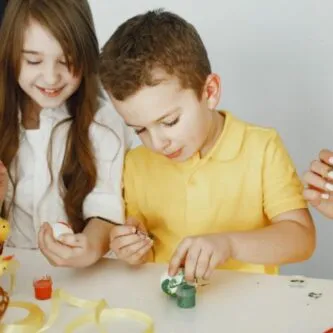
Unless your child has a natural inclination to study, let’s face it — studying is something that both parents and children may struggle with. Children may feel daunted about the amount of information they need to absorb, especially when preparing for an upcoming exam. Likewise, you might also have difficulty encouraging your child to study. However, there are a few key ways to make learning fun at home for both of you. Remember that children love learning — they just have different ways of going about it.
Memorizing facts, solving math problems, or recognizing patterns can be made easier by adopting effective techniques. To make your child’s learning effective and have an impact, try to practice the following: do hands-on activities, encourage them to lead, and gamify the lessons. Read on to learn how.
Do Hands-On Activities
As a breath of fresh air from the usual reading and memorization of concepts, hands-on activities allow both you and your child to exercise creative freedom in learning. The best part is that you can creatively come up with unique ways to aid your child in memorization, understanding, or even mathematical computations.
For example, when teaching your child about finance, money or currency, try to create a situation where you are the shopkeeper and your child has to pay a certain amount to buy a product. Here, you can help your child by using play money and demonstrating to them how much each denomination is worth and how much change they will need.
When learning about history, on the other hand, try to make the topic more interesting to your child by narrating the lessons in a story format. Your child is more likely to remember concepts when the information is in a narrative form, and when they associate studying with something interesting and fun.
Encourage Your Child to Lead
Keep in mind that the purpose of studying is to shape your child’s character and help them answer their exams. This is why it’s important that they also take the reins during the process. Take comments and suggestions from your child about interesting learning activities that they want to try.
Say for example that your child has to memorize the different types of clouds. Instead of simply making them read and learn from their science textbooks, ask them how they would prefer to learn it. A visual learner might tell you that they would like to watch a video about the subject, whereas children with an auditory learning style might prefer to come up with a mnemonic or song about it.
Gamify The Lessons
Gamification is another effective technique to transform your child’s routine studying into something more fun. As the name suggests, gamification involves adding game mechanics into an activity that isn’t necessarily a game. Doing this may help your child become more engaged, active, and enthusiastic about the process.
The kind of game that you play with your child may differ on the school subject. A good example for learning history may be holding a trivia session where your child has to guess the correct answer.
You could also change up the activity by adding positive reinforcement. When your child gets the correct solution for a math problem, you can reward them with a perk. Doing this gives your child something positive to look forward to. They may also view studying as a less daunting activity, which encourages them to take initiative the next time around.
Key Takeaway
As mentioned before, studying at home can be laborious for your child. Doing the same routines over and over again can get tiring and may even make learning much less interesting for them.
To change this up, this guide has outlined some of the different ways to make learning fun at home. By doing hands-on activities, allowing your child to learn, and adding game-like elements to their study sessions, your child’s lessons will infinitely become more palatable and even exciting. Try to practice these techniques as a habit and your child would be able to find the right learning technique that works best.






-logo.png)



